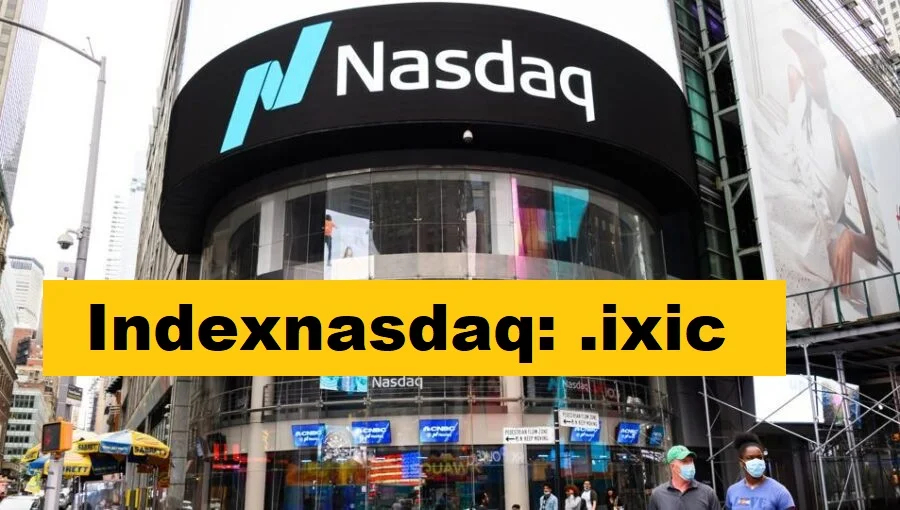Welcome to this comprehensive guide for traders and investors seeking to effectively use the Indexnasdaq: .ixic as part of their stock market analysis.
In this guide, we will cover what the Indexnasdaq: .inx is, how you can use it to improve your trading decisions, and the factors that affect its movement.
We will provide tips and tricks for beginners and advanced traders for successful trading strategies.
What is Indexnasdaq: .ixic?
NASDAQ Composite Index (Indexnasdaq: .ixic) is a comprehensive indicator that monitors and evaluates the progress of both national and international securities listed on the NASDAQ Stock Market such as common stocks, real estate investment trusts (REITs), and American depositary receipts (ADRs).
The index exhibits the performance of diverse areas such as technology, finance, healthcare, and consumer services.
Keep tabs on the market updates through the dynamic and all-encompassing Indexnasdaq: .ixic.

History of the Nasdaq Composite Index
The Nasdaq Composite Index was introduced in 1971 and included 50 stocks.
The Nasdaq Composite Index was created to provide a benchmark for the performance of technology and growth stocks.
The index has since grown to include over 3,000 stocks.
How to Use Indexnasdaq: .inx
When it comes to stock market analysis, the Indexnasdaq: .ixic serves as a valuable tool to gauge the performance of different market segments and track overall market sentiment.
By monitoring the index’s movement, you can make better entry and exit decisions in individual stocks or the broader market.
Trading Strategies with Indexnasdaq: .ixic
Here are some trading strategies:
Trend Following: Utilize the index to identify trends in the market. During an uptrend, it’s advisable to buy stocks or invest in bullish assets for higher gains, whereas in a downtrend, short selling or investing in defensive assets could minimize losses. Apply moving averages or trend lines to help spot trends and reversals more easily.
Portfolio Diversification: Use the index to identify high- and low-performing sectors, then balance your portfolio accordingly. This can help protect your investments in case of sudden market shifts.
Mean Reversion Trading: Look for significant deviations in the index’s trading range, then open positions in the opposite direction. This assumes the index will revert to its average value over time.
Correlation Trading: Track the correlation between the Indexnasdaq: .ixic and other market indices such as the Indexdjx:.dji (Dow Jones Industrial Average) and Indexsp:.inx (S&P 500).
By understanding their relationship, you can tailor your trading strategies accordingly.
Factors Affecting Indexnasdaq: .ixic Movements
Market trends, company news, and economic indicators can all have an impact on the movement of the NASDAQ Composite Index.
Below are some notable factors:
- Market Trends: Sector-specific trends, such as advancements in technology, can impact the index’s movement. For instance, during periods of technological innovation, tech stocks may drive the NASDAQ Composite Index higher.
- Company News: Earnings releases, M&A announcements, and regulatory developments can affect the prices of individual stocks within the NASDAQ Composite Index, which in turn impacts the overall index.
- Economic Indicators: Macroeconomic data, such as GDP growth, unemployment rates, and interest rate changes, can influence the index’s performance.
Generally, positive economic data can propel the index higher, while negative data can push it lower.
Can individual investors buy shares of the Nasdaq Composite Index?
Individual investors cannot directly buy shares of the Nasdaq Composite Index.
However, they can invest in ETFs that track the index’s performance.
Risks of investing in the Nasdaq Composite Index
The Nasdaq Composite Index may be a beat choice for investors who are trying to find high development potential, but it moreover comes with certain dangers that should not be ignored.
The biggest risk associated with investing in the Nasdaq Composite Index is its concentration in technology and growth stocks.
These stocks play a imperative part within the index’s execution, but on the off chance that they do not perform well, there can be a critical affect on the index’s overall performance.
A bit like any other venture, the esteem of the Nasdaq Composite Record can be unstable, and speculators might not get their starting venture back.